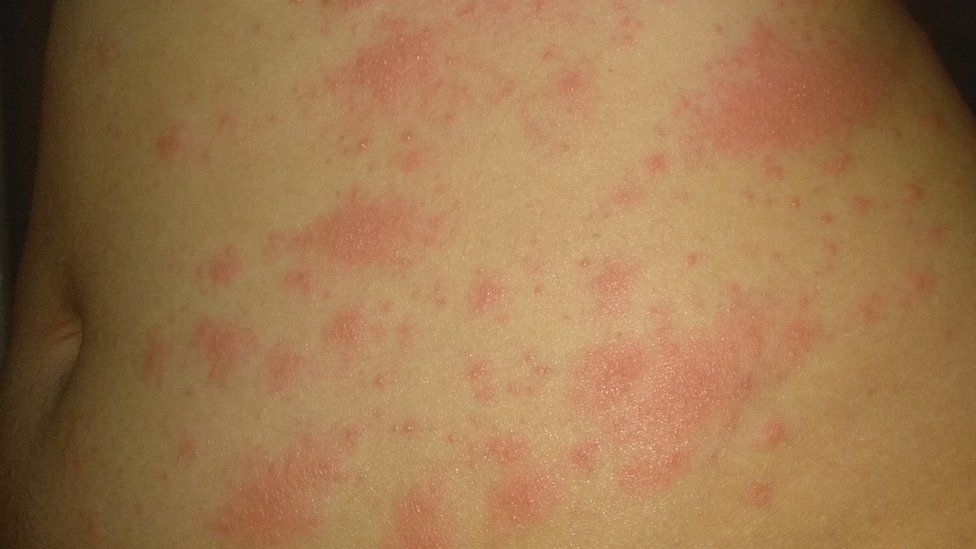
Rash With Covid : When COVID-19 initially made the headlines, it was reported as having a fever, a dry cough, and sometimes shortness of breath as symptoms.
However, experts have produced a more comprehensive list, which includes skin problems, a loss of smell or taste, and even neurological symptoms, as well as the possibility of harming the lungs, kidneys, and circulatory system.
What about those COVID toes in purple?
When COVID-19 began, I believe it was surreal for all of us, and as a nutritionist, I and my colleagues thought, that this was a unique time in our careers where we had the ability to make a greater impact on the world than we had in our whole lives.
Every virus has a three-dimensional structure that is unique, and as a result, it affects the immune system in different ways, resulting in distinct symptoms.
Experts can better understand what the virus is doing in the human body and how it moves around by collecting data on the wide range of symptoms linked with COVID…
SARS-CoV-2, the virus that causes COVID-19, is frequently breathed when a patient is first infected, and it begins to infect cells in the respiratory system, producing more and more virus.
It's for this reason why we wear masks… Duh!
The virus can then make its way into the lungs' small air sacs.
The virus uses these air sacs to break into cells and replicate and spread because they are packed with a protein receptor called ACE2.
The cells that line the blood vessels throughout the body also produce ACE2, and as a result, the virus can infiltrate them as well.
Blood vessels can leak and blood can coagulate as a result of this.
That virus, like most viral infections, eventually makes its way into the bloodstream and spreads throughout the body.
Heart attacks, strokes, and tissue damage can all be caused by blood clots.
As a result, those cardiovascular and neurological symptoms may play a role.
The virus can also affect your neural system, but more research is needed. There are some indications that the virus infects nasal cells, perhaps causing a barrier in how these cells interact with the brain, which would explain why some patients lose their sense of smell and taste.
And there's a reason we wanted to speak with a dermatologist/dermatopathologist in the first place. It's still unknown what happens in the skin, although it could infect blood vessel cells that travel through the skin, or it could be that the virus simply activates immune system cells in the blood, which then send out signals that activate immune system cells in the skin.
You've probably heard of COVID toes, which are red or purple itching pimples on the toes and occasionally the fingers.
If the COVID toe lesions are caused by COVID-19, one argument is that these young patients' immune systems are very well functioning, and they mount a very robust response against the virus as soon as it enters the body, eliminating it effectively and quickly before it can reproduce in large numbers.
As a result, the rash could be a sign of extremely high immune system activation.
However, it's possible that the toe problems have nothing to do with the infection.
Another theory is that during confinement, people's lifestyles alter. More incidences of the so-called COVID toes are being caused by people wandering around barefoot around their homes or spending their days performing different activities than they would ordinarily do.
While the COVID toes remain a mystery, the skin is crucial to understanding COVID-19 since it is such an important aspect of the immune system.
If you imagine your body as a castle, your skin may be thought of as the massive wall that surrounds it.
That is set in place to keep all the nasty things from the outside world out, and your body recognises the value of the skin and in protecting that wall, so it expends a lot of energy lining that wall with troops, which are immune system cells.
Many things can cause those cells to become activated, including invading objects from the outside world, as they try to guard that wall, that barrier, from anything getting inside of it, but those immune system cells can also hear messages from within the body. The state of one's skin can indicate how an illness will progress. Dermatologists are looking into a specific rash associated with COVID to determine if it could signal the internal blood clotting we discussed before.
The other symptom we've found, particularly in COVID-19 kids who are really unwell. Patients who are intubated and require a mechanical ventilator to breathe for them due to the severity of their pulmonary inflammation develop retiform purpura or a violaceous rash, which we recognise as a sign of vascular insult beneath the skin, either clotting in the blood vessels or inflammation around the blood vessels, which we call vasculitis.
And as for the vaccine's adverse effects…
The COVID arm, which essentially depicts a broad oval to circular, pink to red rash raised region on the arm, the lateral arm at the injection location, has been dubbed one of the most prevalent presentations in the skin.
It's normally asymptomatic and has no long-term repercussions, therefore it's not necessary to treat it. It's not a sign that the vaccine won't work or that the patient will develop another problem as a result of it. It most likely reflects the immune system and that part of the body being activated.
